
Share On Social!
This is part of the “Advancing the Science of Cancer in Latinos: 2022 Conference Proceedings,” which summarizes findings and discussions of the 2022 Advancing the Science of Cancer in Latinos Conference on Feb. 23-25, 2022, in San Antonio, Texas.
Framing Latino Cancer Research and the Census Bureau Data That Enable It
Mr. Robert L. Santos is the Director of the US Census Bureau, the first Latino to serve in that position.
Lessons from a vibrant career
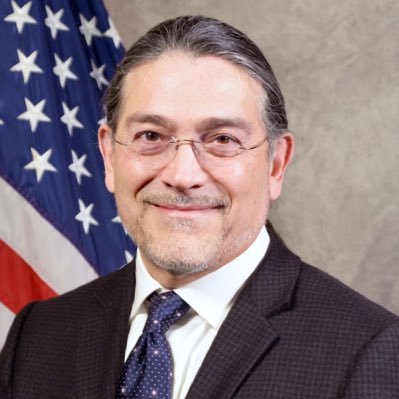
Director Santos began by sharing wisdom gleaned from 40 years of research, including two ways in which it is important to think differently about research problems. First, researchers tend to emulate the methods and thought processes that they have been taught, but these conventional approaches may become self-propagating, and unnecessarily constraining. Second, because research tends to be specialized, solutions should be specialized as well, and not holistic.
A whole life informing a holistic approach
In order to demonstrate the importance of a holistic approach, Director Santos related a story from early in his career in which he served on a health services research grant review committee. On this committee, he was not only the only statistician, but the only person of color as well. One proposal under review featured a randomized controlled trial designed to test an inexpensive alternative treatment for a chronic condition, aimed solely at uninsured patients. Director Santos was the only person on the committee troubled by the design of the study, his discomfort springing from his experience growing up as a Latino in a low-income barrio.
Director Santos’s unique perspective made him uncomfortable with a two-tiered health care system, where the insured receive a conventional, high-quality treatment, but the uninsured receive a cheaper, and potentially less effective, treatment. On his recommendation, the study was revised so that the alternative therapy was offered to all patients regardless of health insurance status. After all, if the therapy is effective, it should be available to everyone. If Director Santos had restricted himself to a statistical analysis only, he would have approved the study, but he instead allowed his life experience, culture, and critical thinking to influence his research practice, leading to a more holistic and thoughtful result.
The broad story of cancer
Having such a holistic approach is important because cancer itself does not occur in a vacuum but is multifactorial. The environment can contribute to cancer, from living downwind from a chemical plant to pesticide exposure, to ultraviolet rays from the sun. Socioeconomic factors can also play a role, with many patients having limited access to healthcare, limited time off for doctors’ visits, and limited access to broadband internet for telehealth visits, not to mention the struggle of paying healthcare costs. Compounding the problem, some patients may have untreated mental health conditions, or may be dealing with the stigma of being an ex-offender. Considering all these obstacles, healthcare providers can be a part of the solution, with research demonstrating improved outcomes if the provider speaks even a little Spanish.
Importantly, these many factors, often called social determinants of health, cannot be mere variables in detached research, but should rather “scream a story of human condition,” said Director Santos. Cancer does not occur in a vacuum, and neither should the research.
The data informs the saga
The context of this human condition requires data. To this end, there is a wealth of publicly available information provided by the Census Bureau that can help characterize residents of Latino communities. Combined with environmental data, these tools can help identify neighborhoods that may be subject to chemical exposure. The 2020 Census Demographic Data Map Viewer, for example, can identify various demographic characteristics down to the census tract level. The American Community Survey is another important tool providing data on a variety of community factors at the tract level, including poverty rates, employment, internet access, and much more. Community Resilience Estimates provide data reflecting the capacity of individuals and households to absorb the external stresses of disasters, such as natural disasters, fires, hurricanes, and even pandemics such as COVID. These estimates are based on 10 risk factors, including income-to-poverty ratios, age, access to a vehicle, and internet access.
Director Santos closed by reiterating a major goal of the Census Bureau: to empower data users with understandable, accurate, and timely information and the knowledge to put it to work. The Census Bureau’s publicly available data can assist in identifying underserved communities and equitably distributing resources. The tools listed above, along with the Census Bureau’s data dissemination specialists, can play a large role in taking the next step toward data equity.
Why Structure Matters
Dr. Robert A. Winn is the Director of Virginia Commonwealth University Massey Cancer Center, as well as the Senior Associate Dean for Cancer Innovation and Professor of Pulmonary Disease and Critical Care Medicine at VCU School of Medicine.
Context informing progress
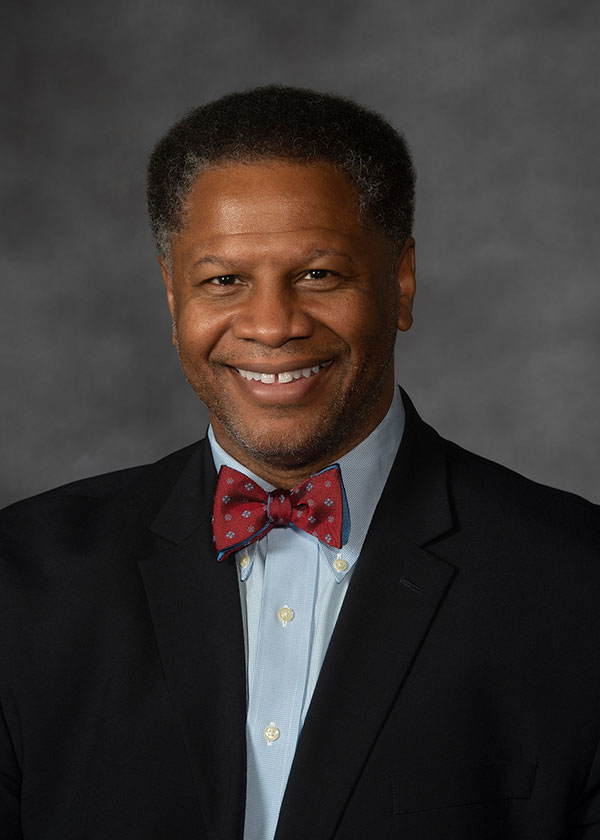
Dr. Winn’s presentation focused on the structure that surrounds a successful career, advising the audience on aspects of a situation that can support success, and also blind spots that can halt growth. He began the session by describing the context surrounding many great scientific achievements. Crick, Watson, and Franklin, for example, could never have discovered the structure of DNA without the institutions they were a part of, the setting they lived in, and the foundation laid by other scientists. The same can be said of more recent Nobel winners, such as David Baltimore, Phillip Sharp, and James Allison.
The history of science, however, is also filled with blind spots. One example is the life of Henrietta Lacks, a cancer patient who passed away in 1951. After her death, her cells, called HeLa cells, were used by Jonas Salk in the development of the Polio vaccine, and were the first cells ever cloned. Although the scientists who used her cells became generationally wealthy, Lacks’ own family received none of the benefit, and were not even informed of the use of their mother’s cells until 1973. This story and others corroborate the long-held fear of hospitals among people of color, as it has now been proven that, in the past, cadavers were often used for scientific purposes without permission from the family of the deceased. Understanding the history of blind spots in science and acknowledging the importance of opportunity and setting can set the stage for a well-balanced career.
The importance of structure
When considering a new career opportunity, many turn to three important factors: space, time, and money. Lab space, how much time can be devoted to research, and compensation packages are all important factors when starting a new endeavor. However, the structure that surrounds those surface considerations can be just as vital. What are the institution’s resources and infrastructure? What shared resources are available? What is the value system of the institution? What is the institution’s record of success? Are there others available to collaborate? What is the climate, and is there administrative support? These questions and others can help build an understanding of the overall structure of an institution.
Mentor or sponsor?
Another key aspect to a supportive structure is having a mentor and a sponsor, two roles that are often confused but that are independently crucial. A mentor is someone who provides guidance and career advice, someone from a similar field who can serve as a sounding board and role model. A successful mentor/mentee relationship is enjoyable, built on openness and support with clear expectations and roles. A mentor talks to the mentee, helping to craft a career vision and providing insight from experience.
A sponsor, on the other hand, is someone who advocates for a person’s career, making sure that person is seen, heard, and recognized by important people. Sponsors are often in leadership positions and believe in the sponsee enough to vouch for them. A sponsor talks about the sponsee to those in positions of power, giving the sponsee access to their personal network and championing the sponsee’s visibility.
Yes or no?
One question that is often asked when attempting to build a successful career is whether to say “yes” or “no” to opportunities that may arise. There is a risk and a benefit to each answer, and in all cases, options must be weighed and a balance found. The risk of saying “yes” is that time is taken from a person’s own goals, reducing overall effectiveness. The benefits, however, are new opportunities and collaborations.
Saying “no” also has risks and benefits. The risks are limited opportunities, a reduced network, and maintaining the status quo. The benefit, however, is that a person’s goals remain the focus and top priority.
The Team
Dr. Winn closed by stressing the importance of building a team. The team starts with stable front-office leadership, as well as a supportive administration. A healthy team should also have a good coach in the form of a mentor and sponsor, as well as solid teammates to provide peer-to-peer mentorship. Supportive postdocs and graduate students are also necessary, and even an effective facility management crew should not be overlooked. Finally, a nurturing community outside of a person’s immediate unit can be immensely helpful. A strong team with these qualities can help develop a love for science not only at the individual level, but on a larger scale, and lead to cooperation that is greater than the sum of its parts.
Advancing breast and liver cancer research in Mexico
Dr. Martin Lajous works with the National Institute of Public Health in Mexico and is an adjunct faculty member at Harvard Chan School of Public Health.
Mexico as an important player in cancer research
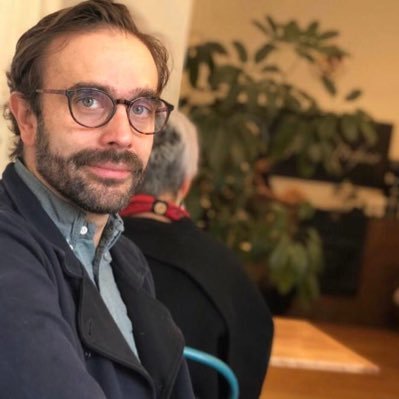
In his presentation, Dr. Lajous set out to convince the audience that high-impact cancer research can be performed in Mexico and that international collaborations can be effective in advancing cancer research. Incidence of breast cancer in Mexico is 43 per 100,000, which is lower than the 93 per 100,000 among the Latinx population in the US. However, breast cancer mortality is 10 per 100,000, making breast cancer the top cause of cancer death in women in Mexico. Survival is also lagging, with an estimated 72% 5-year survival nationally with two third of cases presenting in advanced stages of the disease.
Establishing the Mexican Teachers’ Cohort
Dr. Lajous, along with Drs. Isabelle Romieu and Ruy López-Ridaura and supported by Dr. Walter Willett, set out to perform a prospective study of over 115,000 teachers in 12 states in Mexico, called the Mexican Teachers’ Cohort (MTC). Teachers were chosen because of their familiarity with self-reported questionnaires and available health data, which is mandated by publicly funded healthcare and pension fund management organizations. A clinical sub-cohort of certain teachers from seven states was also established wherein more clinical data was obtained, and a biobank of blood, plasma, and serum aliquots was initiated.
Cohort follow-up was conducted via paper, online, and telephone questionnaires. The first follow-up, conducted from 2011 to 2013 had an 82.7% response rate, while the second, conducted from 2014 to 2020, had a 63.4% response rate. After cross-referencing the results of self-reporting with electronic health records and registries, 1,212 of the participants were confirmed to have breast cancer.
Initial findings and future directions
Some risk factors, such as breast cancer family history, seemed to follow established patterns in the cohort. However, other risk factors, such as nulliparity, did not follow known patterns from other populations, which may indicate different risk factors in this population.
Much more work is needed to make full use of the MTC. First, an analysis of the relationship between lifestyle and breast cancer should be conducted, and a risk prediction model should be established for breast cancer in Mexican women. The relationship between diabetes and cancer could also be studied, as there were over 12,000 women with diabetes in the cohort. Finally, it is important to optimize the existing research infrastructure by georeferencing participants, enriching biospecimen collection, and strengthening data sharing and systems.
The liver cancer conundrum
Another of Dr. Lajous’ studies, funded by the NIH, looked at types of cancer in Mexico. This study found that liver cancer was the number one cause of cancer deaths in certain Mexican states. Interestingly, these states had an equal number of liver cancer deaths among men and women, a ratio that is typically 3:1 male to female. Upon further investigation, the study found a relatively low number of viral factors and a relatively low rate of alcoholism. Instead, it was hypothesized that aflatoxin might be playing a role.
Aflatoxin is found in contaminated maize and is common among certain rural subpopulations. In order to further understand this possible association, a small pilot study of 100 participants was conducted in Chiapas, Mexico, a rural area with high incidence of liver cancer. This study found that 85.5% (95% CI, 72.1-93.1) of the overall population had exposure to aflatoxin.
The future of liver cancer research and the future of collaboration in Mexico
Based on these findings, Dr. Lajous is now looking retrospectively at aflatoxin and liver cancer cases in five Mexican states, as well as determining the feasibility of prospectively recruiting men and women with liver cancer. More work is needed to characterize the cancer risk distribution in Mexico and to explore determinants of aflatoxin levels. Another approach to the aflatoxin problem could be in collaboration with a National Cancer Institute initiative in Guatemala, the country with the highest aflatoxin exposure in the region. Compiling the results from Guatemala with findings in Mexico and other North American countries could reveal new associations between aflatoxin exposure and liver cancer.
Such collaborations are in fact a large part of what Dr. Lajous is striving to accomplish, working toward a more global view of public health goals and increasing data visibility and data sharing flexibility. These collaborations can also support junior investigators, providing them with career development opportunities. Dr. Lajous ended by stressing the importance of maintaining active cross-border conversations, engaging all parties for the greater good.
FIPOL: An International Effort to Support Latino Psycho-Oncology Research and Capacity Building
Dr. Rosario Costas-Muñiz is Assistant Attending Psychologist in the Department of Psychiatry & Behavioral Sciences at Memorial Sloan-Kettering Cancer Center.
A glaring hole in psycho-oncology knowledge
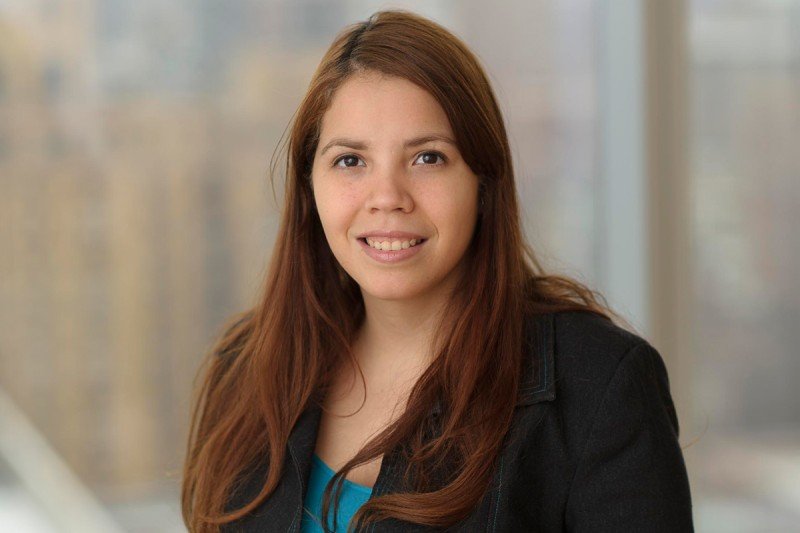
Dr. Costas-Muñiz began by discussing psycho-oncology. In 2011 an international movement began to declare stress management the sixth vital sign of cancer. This focus on acknowledging and managing psychosocial distress was spearheaded by the International Psycho-Oncology Society (IPOS). Within IPOS, the International Federation of Psycho-Oncology Societies is responsible for the global, panoramic view of psycho-oncology. Unfortunately, in this institution, Latin America is woefully underrepresented, with only Brazil and Peru having a presence, leaving a dearth of knowledge about psycho-oncology in this region.
Six years ago, in order to address this lack of knowledge concerning psycho-oncology in Latin America, Dr. Costas-Muñiz conducted a survey of 59 mental health providers of cancer patients. These providers reported the themes they addressed with patients, including coping strategies, patient autonomy, end-of-life concerns, family related issues, and others. The therapeutic approaches were also reported, with cognitive behavioral therapy (CBT) being the most common. Despite this new knowledge, however, it was clear that much more work was needed to build an understanding of psycho-oncology in Latin America.
The founding of FIPOL
To this end, Dr. Costas-Muñiz founded FIPOL, which stands for Formación en Investigación Psicosocial Oncologica para Latinoamérica, a rough English translation being “Capacity Building in Psychosocial Oncology for Latin America.” This international collaboration, founded in 2017, aimed to connect Spanish-speaking clinicians and researchers interested in psychosocial oncology from Latin America, the US, and Spain. FIPOL seeks to develop collaborative research projects and spread knowledge of the latest research in psychosocial oncology through four avenues: research initiatives, communication and dissemination, resource development, and seminars and events.
FIPOL built its audience through existing networks, provider studies, and professional conferences. It engages this audience using a broad approach: listserve, the website (www.fipol.info), LinkedIn, Twitter, Facebook, Instagram, and YouTube. Email is also used to share FIPOL course invitations, information about other organizations’ events, recent article highlights, cancer prevention campaigns, invitations to participate in ongoing studies, and more.
The research of FIPOL
One of the research initiatives currently being spearheaded by FIPOL involves recommendations on the use of telehealth in psycho-oncology for Latin America. In a 2021 survey, 201 mental health providers were asked about the opportunities, challenges, and considerations of the use of telehealth. Issues such as the use of digital interventions, the challenges of working from home, institutional and governmental support, and considerations involving exposure to COVID were touched on in the survey. When asked under what circumstances telehealth would be appropriate for patients, providers most commonly listed living far from the clinic, living in rural or remote areas, a desire to avoid travel, and mobility limitations. When asked when telehealth would not be recommended, providers most commonly listed poor technological skills and older age.
FIPOL has many other areas of research interest as well. One current study is considering compassion fatigue within the oncology health team in Latin America. Another is focusing on the practice of psychosocial oncology during the COVID-19 pandemic. Still another involves validation of instruments used in the context of cancer. This study also includes a database of instruments indicating the studies in which the instruments have been used, the population studied, and the country involved.
The future of FIPOL
Dr. Costas-Muñiz ended by outlining the future focus of FIPOL research. One grant proposal concerns integrating mental health into health care systems in low- and middle-income countries. Another priority is the development of an app, eDESCANSO, to treat the cluster of depression, fatigue, and sleep disturbance.
The work that FIPOL undertakes comes with both challenges and opportunities. The challenges are multitudinous, including limited funding for global health initiatives, limited research infrastructure for psychosocial research, competing research priorities in participating institutions, lack of familiarity with psycho-oncology research, recruitment during the pandemic, and more. Opportunities, however, also abound. These include the commitment of the steering committee members and trainees, interregional collaboration, the wide availability of trainees, easy-to-use technologies like ZOOM and WhatsApp, social media tools, and shared language and values among Spanish-speaking clinicians.
Achievements of the Latin American Cancer Research Network (LACRN) and Lessons Learned: Notes to Improve Cancer Science in Latin America
Dr. Andrea Llera is the Executive Manager of Latin American Cancer Research Network (LACRN), as well as group leader of translational genomics at the Fundación Instituto Leloir in Buenos Aires, Argentina.
The founding of LACRN
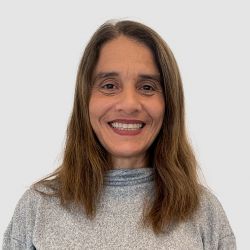
Dr. Llera began by introducing the Latin American Cancer Research Network (LACRN), an initiative funded by the National Cancer Institute (NCI) and the governments of five Latin American countries: Argentina, Brazil, Chile, Mexico, and Uruguay. This project was started in 2010 with a goal “to build a sustainable model with a systematic approach to do cancer research in Latin America,” and was built with longevity in mind. Six main focus areas were outlined from LACRN’s inception, including training key personnel, infrastructure (such as biobanks, pathology automation, and genomics equipment), data quality, sustainability, standardization of procedures, and networking.
The first study conducted by LACRN as a proof-of-concept was a Molecular Profile of Breast Cancer Study (MPBCS), with the primary endpoint of characterizing the distribution of molecular profiles of stage II and III invasive breast cancer. In the study, all levels of public health care were represented, as well as institutes and universities in all five participating countries, and over 300 collaborators were involved. The challenges of such a widespread and collaborative study were many, and although the planning for the study began in 2009, the first data presentation was in 2021.
The Molecular Profile of Breast Cancer Study
The study enrolled 1,449 patients, of which 1,300 were found eligible. Around 1,000 patients were studied by gene expression arrays and genotyped. In this way, the distribution of the molecular ancestry in each country’s cohort was studied, revealing an overall mixture of European and Indigenous American ancestries in Argentina, Chile, and Mexico, and an expected African presence in Brazil and Uruguay.
Regarding gene-expression subtyping, analysis of breast cancer in the MPBCS cohort showed a very similar pattern of disease to other hospital-based Latin American cohorts. The distribution of PAM50 subtypes showed a bias towards highly proliferative, more aggressive tumors. This was partly expected because of the recruitment bias towards advanced stages. When survival was analyzed by country for each PAM50 subtype, Luminal A tumors led to the best survival, while Basal-like tumors were the ones associated with worst survival. Within the Basal-like subtype, Mexican patients showed twice the probability of survival than Argentina. Survival in HER2E patients was conditioned by trastuzumab availability.
The challenges of non-interventional studies
Non-interventional studies, such as MPBCS, are rare in Latin American countries for several reasons. First, these studies depend on the extensive work of one or a few investigators who are the engines of the entire study. Second, local needs tend to be different from the needs of the international scientific community. Research teams are often siloed, each group figuring out how to do the study by themselves, making collaborations difficult to establish. Furthermore, the primary investigator is sometimes a non-medical researcher with experience in grant applications but less experience in the clinical ecosystem; this is because healthcare professionals are typically overwhelmed with routine work and have no protected research time available. Variations in data handling can also lead to fragmentation, and there may be insufficient access to training in state-of-the-art technologies.
The financial struggles involved in this type of project are daunting. To begin, the investigators usually have to “bypass” their financial institutions to receive necessary funding for the study. And because the primary investigator is usually a non-medical researcher with little clinical experience, there are often unforeseen hidden costs. Further, many local funding sources do not include money for building databases.
The successes of LACRN
Despite these struggles, however, much was achieved through the MPBCS study beyond even the analyzed outcomes. Medical training was delivered and incorporated into daily practice in each of the participating countries. Biobanks were founded and maintained. Dynamic databases were established. Although some of the infrastructure of the study was lost – such as data entry force and health center navigators – the knowledge of how to build these resources has been established, and funding is all that is needed. Despite the overwhelming difficulties involved in conducting such a study, LACRN and the MPBCS laid an invaluable foundation for the future of breast cancer research in Latin America.
Explore More:
CancerBy The Numbers
142
Percent
Expected rise in Latino cancer cases in coming years



